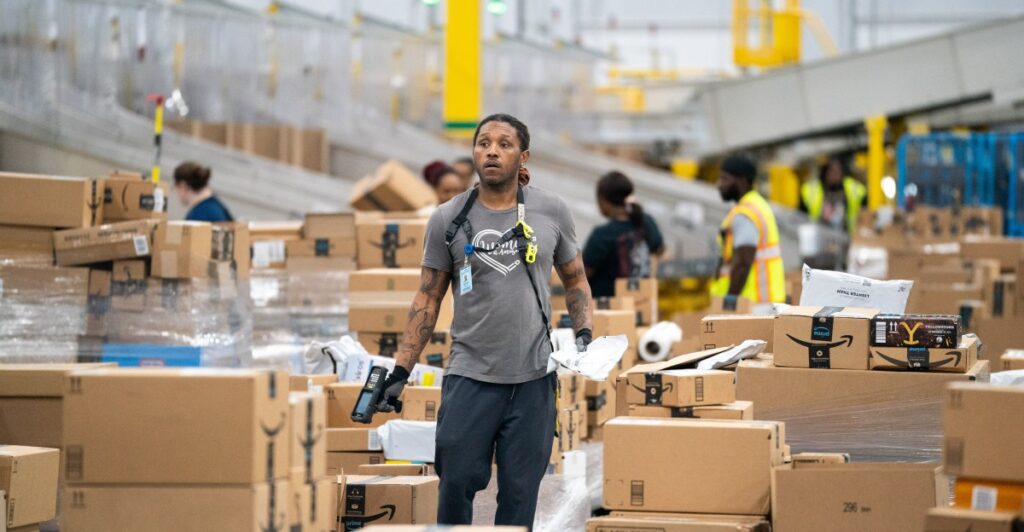Amazon’s stock price fell as much as 20 percent on Thursday afternoon after the tech giant provided a weak forecast for the holiday quarter. The company’s chief financial officer said Amazon is attempting to cut costs as it sees signs that both business and consumer customers are watching their spending.
“We are taking actions to tighten our belt,” Brian Olsavsky, Amazon’s chief financial officer, said in a call with reporters on Thursday.
Amazon said in its earnings release that it expected to generate $140 billion to $148 billion in revenue during the final quarter of 2022, disappointing Wall Street stock analysts who had expected revenue projections of around $155 billion. Sales growth of Amazon’s highly profitable Amazon Web Services cloud computing unit slowed in the third quarter as business customers looked to cut spending — “I think every company is trying to save money,” Olsavsky said — and Amazon’s core retail business softened as consumers began spending less, most notably in Europe.
Are you a current or former Amazon employee with thoughts or tips on this topic? Please email Jason Del Rey at jason@recode.net or jasondelrey@protonmail.com. His phone number and Signal number are available upon request by email.
“Europe has been weaker than North America, although we see the impact of consumers tightening their belts a bit globally,” Olsavsky said. He referenced entering a period of “uncharted waters,” with tightening budgets, inflation still high, and high energy costs.
Words of caution from a top executive at one of the world’s most valuable companies and largest US employers, coupled with the weaker-than-expected holiday forecast, could be a sign that the worst days of the current economic slowdown are still ahead of us. And that should be worrying to anyone, whether they’re a fan of Amazon or a critic who doesn’t want the company to succeed.
And it’s not just Amazon. Other tech companies provided similarly ominous signals recently. Google and Microsoft both told investors this week that they would slow hiring, and Amazon said earlier this month that it would freeze hiring in its core retail business, which is its maturest business unit but also its slowest-growing and least profitable.
Similar to Amazon, Microsoft reported to Wall Street this week that business customers of its Azure cloud computing business were looking to cut spending, signaling broader belt-tightening in the corporate world. And if mid-sized and large companies with large workforces are preparing for the economic climate to worsen, that could be a sign that more people are in jeopardy of losing their jobs and that smaller businesses on less stable footing could have a rocky road ahead.
Silicon Valley is also facing trouble in the advertising business, which is a massive source of revenue at the top technology companies. Amazon, Google, and Facebook — the three largest advertising sales companies in the US — also revealed slowdowns in their ad businesses. Some of that is due to changes in privacy controls Apple started offering iPhone users last year, which can make it harder for marketers using advertising tools from the tech giants to target these users with ads.
But that’s not the whole story. Amazon’s ad business is largely insulated from Apple’s privacy changes, but the company’s CFO said the division is still seeing softening demand from consumer brands and merchants looking to market their goods to Amazon customers, with these advertisers spending less per digital ad impression. Amazon’s ad revenue still grew 30 percent in the third quarter, but that’s down from 52 percent in the same period in 2021.
“We are preparing for what could be a slower growth period, like most companies,” Olsavsky said.
And if tech giants like Amazon, that once seemed invincible amid record sales and profits spurred by the early days of the pandemic, are preparing for the economy to get worse, the rest of us probably should too.

